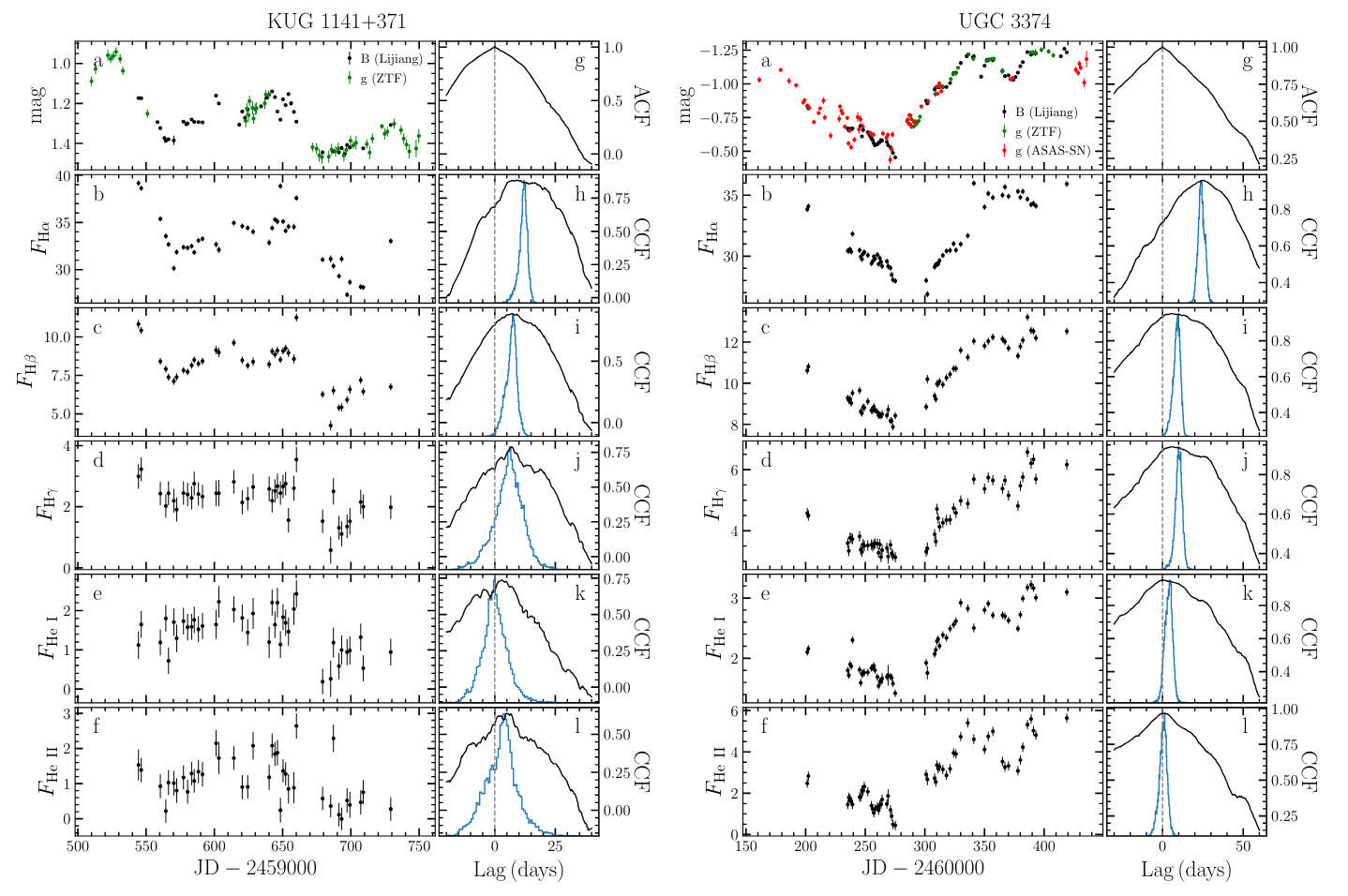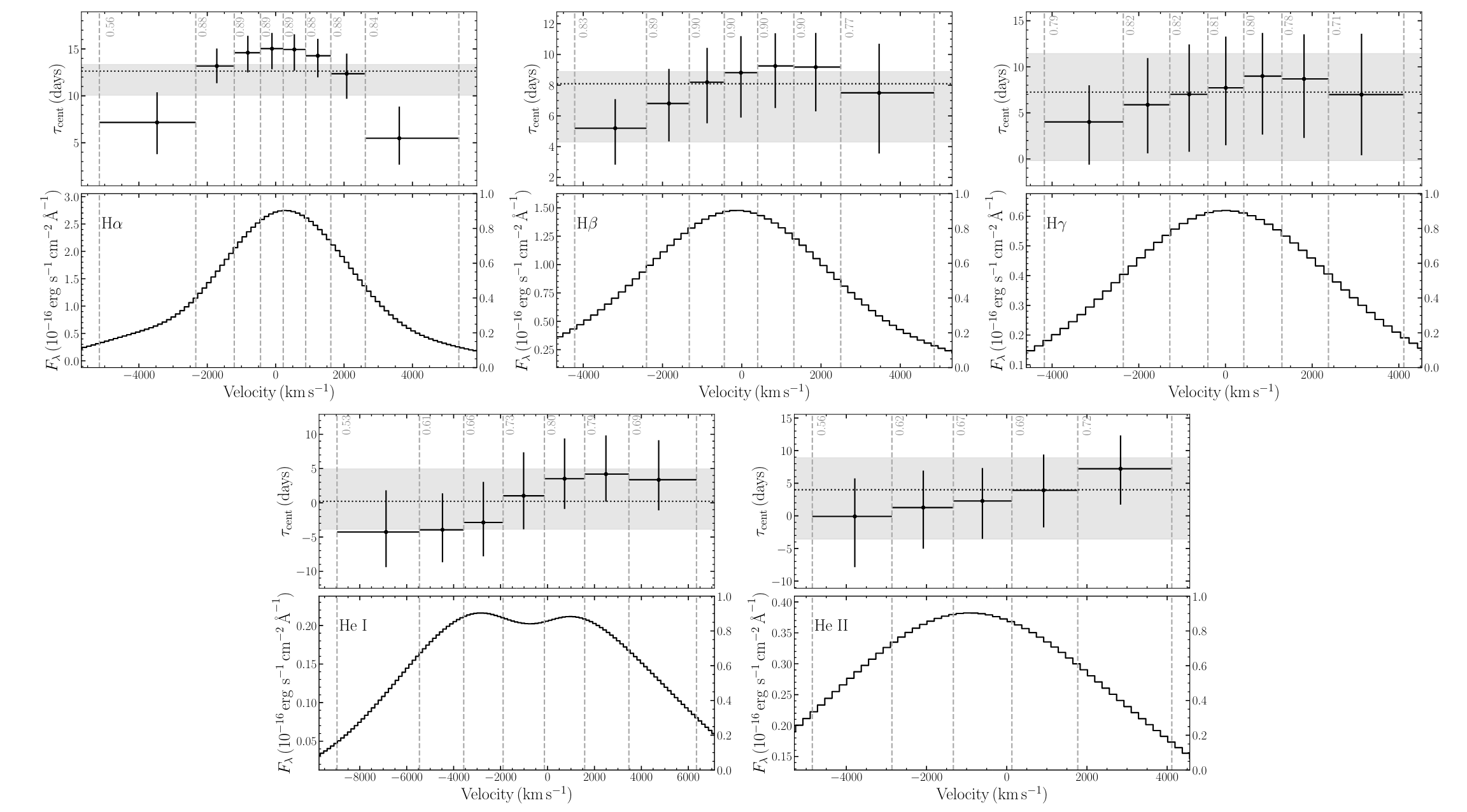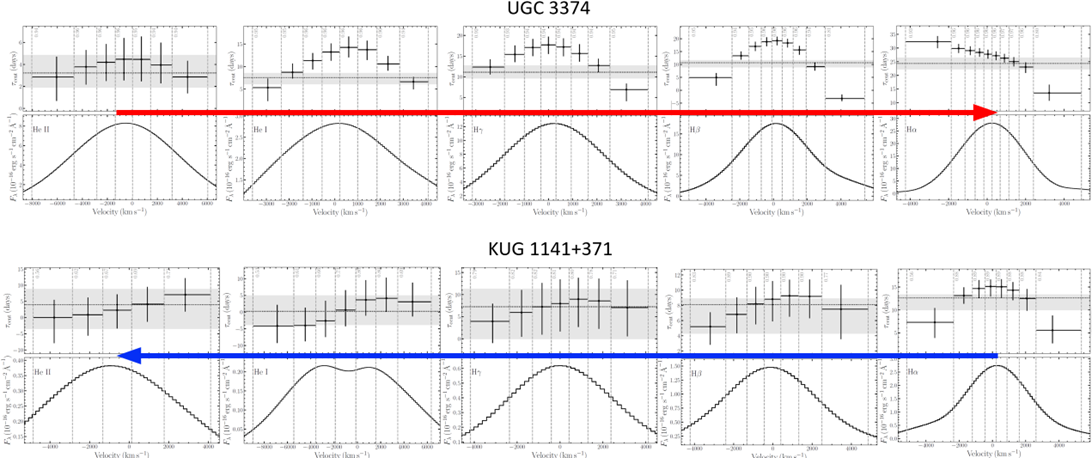A research team from the Yunnan Observatories of the Chinese Academy of Sciences has recently published a study in The Astrophysical Journal that examines the inner and outer broad-line regions (BLRs) of active galactic nuclei (AGNs).
The BLR is a crucial component of AGNs, characterized by gas clouds moving rapidly under the influence of a supermassive black hole (SMBH). This motion creates broad emission lines through Doppler broadening. Understanding the BLR's geometry and kinematics is essential for insights into black hole environments and mass measurements. Traditionally, studies have focused on a single emission line for reverberation mapping (RM), limiting comprehension of the BLR's gas distribution and dynamics.
To address this limitation, the researchers introduced a novel method using multiple emission lines for RM observations. They applied the method to two variable AGNs: KUG 1141+371 and UGC 3374. Their findings revealed significant radial ionization stratification and distinct kinematic behaviors in the inner and outer BLRs. For example, in KUG 1141+371, the inner BLR exhibited outflowing motion, while the outer BLR was virialized. In contrast, UGC 3374 showed inflowing motion in the outer BLR and a virialized inner BLR. The researchers also identified a transition from "breathing" (expansion and contraction) to "anti-breathing" (inverse motion) behavior between the inner and outer BLR, indicating distinct physical properties.
To interpret these findings, they explored various possible scenarios for BLR formation, including the roles of radiation pressure, magnetically driven winds, and the tidal disruption of dusty gas clouds. The observed geometric and kinematic stratification helps to explain the rapid changes in velocity-resolved RM signals noted in recent studies, as well as the variability in black hole mass estimates obtained from different emission lines or luminosities.
This research underscores the importance of long-term, multiline RM observations to unravel the complex geometry and evolution of the BLR in AGNs.

Figure 1: Light curves and CCF results for KUG 1141+371 (left) and UGC 3374 (right). Subplots (a)-(f) show the light curves for photometry, Hα, Hβ, Hγ, He I, and He II emission lines. Subplot (g) presents the ACF results of the photometric light curve. Panels (h)-(l) display the CCF results (black line) and the CCCD (blue line) between the emission lines and photometric light curve. (Image by FENG)

Figure 2: Velocity-resolved time delays for KUG 1141+371 (left) and UGC 3374 (right). Each subplot presents the results for the Hα, Hβ, Hγ, He I, and He II emission lines, divided into two panels. The upper panels show the time delay for each velocity bin, with the horizontal dashed lines indicating the mean delay for each emission line and the gray shaded regions representing the corresponding uncertainties. The vertical gray dashed lines mark the boundaries of each velocity bin. In the lower panels, the black stepped lines depict the RMS spectra generated from the broad emission line profiles, with the vertical gray dashed lines again marking the boundaries of each velocity bin. (Image by FENG)

Figure 3: Velocity-resolved time delays for UGC 3374 (top) and KUG 1141+371 (bottom). Each subplot presents the results for the Hα, Hβ, Hγ, He I, and He II emission lines, divided into two panels. The upper panels show the time delay for each velocity bin, with the horizontal dashed lines indicating the mean delay for each emission line and the gray shaded regions representing the corresponding uncertainties. The vertical gray dashed lines mark the boundaries of each velocity bin. In the lower panels, the black stepped lines depict the RMS spectra generated from the broad emission line profiles, with the vertical gray dashed lines again marking the boundaries of each velocity bin. (Image by FENG)






